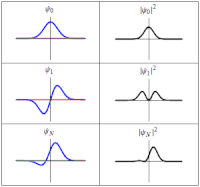Transition dipole moment

Do you know what a dipole is? It's like a little magnet, with a positive and negative part! When something has a "transition dipole moment," it means that it's like a little magnet that's changing how strong it is, and what direction it's pointing, because of how two things are interacting.
Imagine you're playing with some toys. Pretend you have two toy cars, and you're moving them towards each other. If they don't hit each other, then they'll just keep going straight. But if they do hit each other, they might bounce off each other, or change direction somehow. That's kind of like what happens when one molecule (or atom) interacts with another. They can change each other's path!
Now think about those toy cars again, but imagine that they have magnets on them, so they're attracted to each other. When they get close, they're going to feel that attraction, and might start to move towards each other even faster. That's like how a "transition dipole moment" works – it's like those two toy cars becoming little magnets, that are attracted to each other.
So when you hear about a "transition dipole moment," it means that two molecules (or atoms) are interacting, and they're changing how strong and which direction their "magnetic attraction" is pointing. It's an important concept for scientists to understand, because it can help them study lots of different chemical reactions and processes!
Imagine you're playing with some toys. Pretend you have two toy cars, and you're moving them towards each other. If they don't hit each other, then they'll just keep going straight. But if they do hit each other, they might bounce off each other, or change direction somehow. That's kind of like what happens when one molecule (or atom) interacts with another. They can change each other's path!
Now think about those toy cars again, but imagine that they have magnets on them, so they're attracted to each other. When they get close, they're going to feel that attraction, and might start to move towards each other even faster. That's like how a "transition dipole moment" works – it's like those two toy cars becoming little magnets, that are attracted to each other.
So when you hear about a "transition dipole moment," it means that two molecules (or atoms) are interacting, and they're changing how strong and which direction their "magnetic attraction" is pointing. It's an important concept for scientists to understand, because it can help them study lots of different chemical reactions and processes!
Related topics others have asked about:
